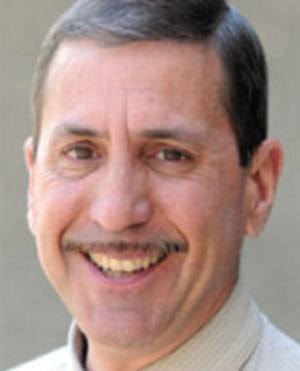On Point by Andrew Holota
“The fact of the matter is, the city is going to need a new water supply by 2016.”
So stated then-mayor George Peary in October 2011, at the launch of an information campaign on a $300-million Stave Lake Water Project.
It is now 2016, and Abbotsford does not have a new water supply, nor has it run out of water.
It does, however, have a new mayor, who was running for council in 2011, and came out opposed to the Stave project. Henry Braun got a new job, and Peary lost his. He was defeated along with the referendum on the P3 water plan.
The public is a fickle beast, especially at the polls.
Peary was pouring the Kool-Aid prepared by a well-established civil engineering firm hired to do a major water supply study for the city. That company examined years of consumption data, extrapolated a record-high consumption figure against population growth projections of the day, and arrived at the conclusion that Abbotsford might indeed find itself with a serious water supply problem by 2016.
Preparing for a worst-case scenario is not an unreasonable approach for a government to take.
But the Stave Lake project washed out, due to a number of factors, key among them the fact it was proposed as a P3 – a public-private partnership between government and a private corporation yet to be chosen. That scared off a lot of people, due in part to a propaganda campaign by a group that conjured the bogey-man of a private company ending up owning public water. Snake oil, but effective, as many voters bought it.
Then there was the project’s huge price tag, albeit one that came with a $66 million grant from the federal government. Regardless, there was a fear factor flowing from the multi-million-dollar annual pain of an eye-popping guaranteed-revenue city contract with the AHL Heat hockey team lured to the new Abbotsford sports centre – a $100 million-plus arena also funded and subsidized by taxpayers.
It wasn’t a good time for the council of the day to say “trust us” on this water project, let alone actively promote it.
And the armchair alarmists aside, there were enough reasonable voices in the mix to cast doubt on those water usage predictions, and the seemingly under-rated effect of conservation efforts.
Thus, down went Stave, much to the chagrin of those who felt it was an important project whose time had come, and one which could work well enough with corporate involvement. I was among that crowd.
Since then, water conservation turned out to be far more effective than the study envisioned. Even in last summer’s record drought, Abbotsford was consuming 85 per cent of water supply capacity.
Now, this city and Mission are once again on the search for water or – more accurately – options to supply it.
Call it prudent management, or even a gutsy gamble to delay this long, but it would be nothing but foolish to push this off any longer.
Anti-corporation fearmongers don’t concern me. Global warming deniers do.
The climate is getting drier and hotter. And this city is going to keep growing. It must, since that’s how this country’s economy works.
So, finding a new, bigger water source is an absolute city priority.
Smaller, interim measures may be cheaper, and more politically palatable, but a courageous council will play the longer, tougher game this time. It can drop the dreaded P3 approach, if it must.
As much as everyone hates more taxes, we’ll hate dry taps a whole lot more.
Find a new, long-term water solution, and launch it. And this time, I’d say council can dispense with the niceties of a referendum. Just do it.
Andrew Holota is the editor of The Abbotsford News.
